Whether you’ve just noticed that your tire is flat or are trying to reinflate an old tire, you may be wondering if there’s anything in particular you should do differently, such as putting air in the tire yourself.
So, can you put air in a flat tire? If you’d like to find out, keep reading to see what I learned on this topic!
You can put air in a flat tire if it’s been deflated, but if there’s a puncture, the tire won’t hold the air. Slow leaks will continue to leak as well, eventually leading to another flat tire. Usually, there’s no reason to fill up a flat tire unless it has been purposefully deflated.
For more information on filling up flat tires, as well as a few tricks if you’re having difficulties, keep reading below for more useful facts and tips!
Being able to inflate a flat tire largely depends on why the tire was flat to begin with. For example, if there’s a large puncture in the tire, filling it back up with air probably won’t do anything, and you’ll simply end up with another flat tire.
However, if there’s a slow leak, then reinflating the tire will cause it to fill back up, though the air will slowly leave the tire overtime, and how quickly the air will leave depends on how fast the leak is.
If you find an older tire that has lost all its air, you’ll likely be able to reinflate it. However, you’ll also have to consider whether such an old tire is safe to use.
Generally, all tires are unsafe to use after about six years. However, if the tire was stored improperly, it may not actually last that long (for instance, those that are stored outside are often worn down much faster by UV rays).
With that said, tires that were simply deflated can easily be filled back up. Sometimes, you’ll need to press on the tire to prevent the valve from recessing. Otherwise, you may have trouble attaching the pump properly.
Usually, you’ll be able to inflate a flat tire without much of a problem as long as there isn’t a puncture.
Typically, driving on a flat tire isn’t safe, and if your tire has no air at all, then driving on it can cause damage.
Additionally, you may not be able to fill the tire back up after driving on it with improper pressure.
Furthermore, driving on a flat tire is dangerous because the pressure isn’t high enough, and it won’t be able to get the proper grip.
As well, your tire won’t provide the same amount of control that a fully inflated tire would. In the end, this makes an accident much more likely.
However, if your tire has a slow leak, you may be able to drive on it for a bit. With that said, you should stop for a moment every few miles to check on the pressure, and if the tire ever becomes completely flat, you should stop driving on it.
As well, your tire won’t drive well with less pressure than suggested.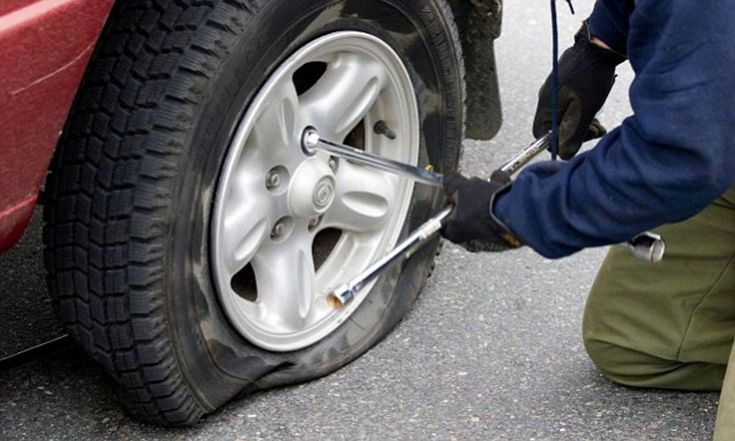 Therefore, even a partially flat tire should be carefully driven on, otherwise, you may be at an increased risk of an accident.
Therefore, even a partially flat tire should be carefully driven on, otherwise, you may be at an increased risk of an accident.
Inflating a flat tire at home is slightly more difficult than inflating an already inflated tire. After all, the valve will often be recessed into the rubber, which will make it more difficult to inflate completely.
However, you can typically press on the area around the valve to hook the compressor onto it completely. Be sure to check the pressure as necessary, and if needed, push the needle at the center of the valve to let the air out.
However, you shouldn’t attempt to inflate a tire that’s damaged, as the punctured tire won’t hold air. However, it could potentially damage the tire more if you inflate it before repairing it.
You shouldn’t try to drive with a flat tire at all, as there are several problems that can occur if you attempt to drive with a flat tire.
First off, you may damage the tire beyond repair, and even if it isn’t all that damaged, driving on it while flat will often cause more damage. As you might imagine, this may cause you to be unable to repair it completely.
Second, driving on a flat tire is very dangerous, because they don’t have grip or traction. Plus, they’re difficult to control and will act much differently than your other tires, which make accidents much more likely.
To learn more tires, you can also see our posts if you can plug a run-flat tire, how long can a car sit on flat tires, if you can drive on a flat tire, and how common are flat tires.
You can put air in a flat tire by hooking up an air compressor to the valve and filling it to the appropriate level.
In some cases, you may need to press on the tire around the valve to get the compressor tip connected correctly. However, if the tire is flat due to a puncture, there is little reason to refill it, as it will simply lose the air again.
In a previous blog, we went through each of the steps necessary to change a flat tire. But what do you do when you open the trunk and find that your spare is flat, too? Or what if in a series of unfortunate events, your spare is punctured shortly after you put it on?
No matter what situation you may find yourself in, it's never a bad idea to have another trick up your sleeve; another way to fix a flat tire when a spare isn't available. Fortunately, there are two methods that are simple, cheap, and effective. Read on as we show you what to do if you have a flat and no spare!
Imagine this: You're on a road trip with the family (and the dog) and you stop at the gas station for a much-needed snack. As you walk back to the car, hotdog in hand, you notice something strange on your front tire - it's the dreaded silvery glimmer of a nail. What's more, the tire looks like it's deflating and sooner rather than later, you'll have a full-blow flat.
As the children grow restless and the dog loses its patience, you think through your options. Unfortunately, the spare tire isn't one of them - it's flat, too. Now what? In most cases, roadside assistance would be the best option, but the whole family can't ride in the tow truck to the tire shop and you don't want to leave them with the dog in the parking lot.
Fortunately, you read a blog somewhere that helped you put together a roadside emergency kit. You fish it out of the vehicle and sift through it to find exactly what you need to get back on the road.
So, what was it you found in your kit that saved the day? There are two main tools you can use to temporarily fix your flat without changing the tire completely (assuming your tire isn't totally ruined): puncture sealant and a tire patch kit.
Regardless of which tool you have on hand, the first step is locating the puncture site.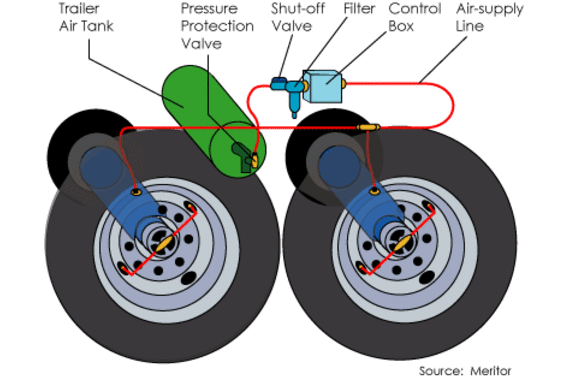 Of course, this won't be particularly difficult if you ran over something like a nail, but finding a hole in a punctured tire isn't always so easy. To locate the source of the leak, try the following:
Of course, this won't be particularly difficult if you ran over something like a nail, but finding a hole in a punctured tire isn't always so easy. To locate the source of the leak, try the following:
Visual inspection. First, you can look over the tire to try and find any obvious punctures or foreign objects (like nails).
Listen. If you don't see anything right away, bring your ear close to the tire and listen for a faint hissing sound.
Feel. Sometimes, an otherwise invisible puncture can be found by holding your hand just above the tire to feel for the leaking air.
Soap and water. If all else fails, try the soap and water method. Fill a bucket with water and add dish soap. Then, carefully coat the outside of the tire until it is covered in suds, either by hand or a spray bottle if you have one. Wait for the leaking air to create a small frothy patch of bubbles - you've found the leak! Mark it and then wash the soapy water away.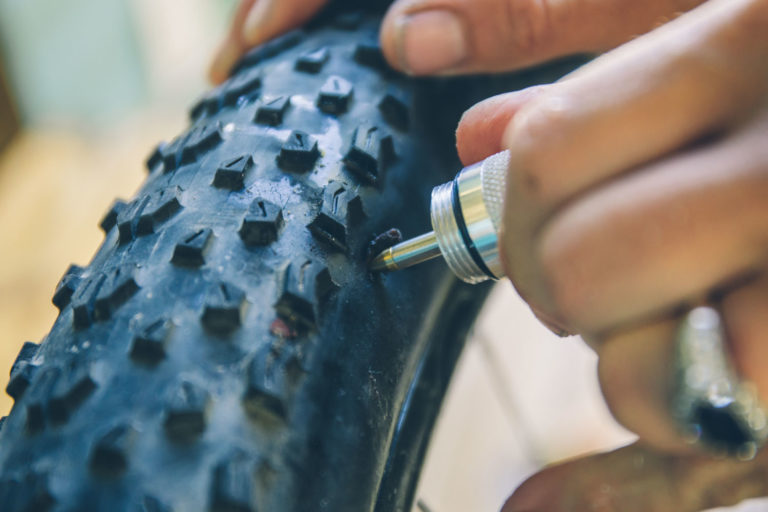
Of course, if you find yourself with a flat on the side of the road, you may not have soap, water, and a bucket on hand. However, if you're near a gas station or grocery store, you may be in luck. All you need is a water bottle (or any plastic bottle) and hand soap from a restroom. Simply add the soap to the water in the bottle, shake it up, and gently pour and spread it over your tire!
Now that you've found the leak, let's look at the two most common ways you can fix it.
There are a number of different products on the market that can seal a puncture, and they fall into two main groups. Some brands are a gel-like substance that hardens around the puncture. These products can work well, but they usually require other tools to effectively apply and can be quite messy.
The more common puncture sealant products come in an aerosol can, and don't require anything additional. For our purposes, we'll be focusing on this variant.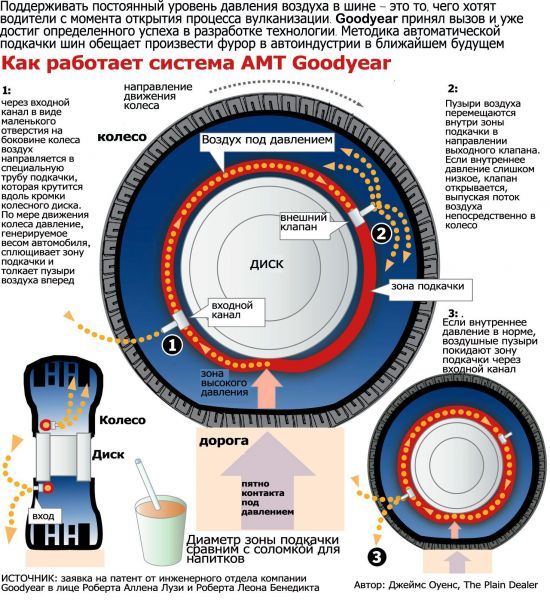 While the specific directions may vary from product to product, they generally work in a similar fashion.
While the specific directions may vary from product to product, they generally work in a similar fashion.
The aerosol cans typically contain a foam or liquid sealant along with extra air. You attach the can to the tire's valve stem with the tube provided and fill it with the sealant, which presumably covers the puncture from within before hardening. Obviously, these products aren't going to fix major punctures or gashes, but they can be a great temporary solution.
Before using a puncture sealant product, make sure to read the can for product-specific instructions. They'll likely look something like this:
Step 1: You'll first need to remove any foreign objects, like a nail, with a pair of pliers.
Step 2: Position the tire with the valve stem at the top.
Step 3: Attach the nozzle on the can of sealant to the valve stem.
Step 4: Press the button and allow the fluid to enter.
Although the can comes with a little extra air, you'll likely need to add more air after the sealant becomes firm.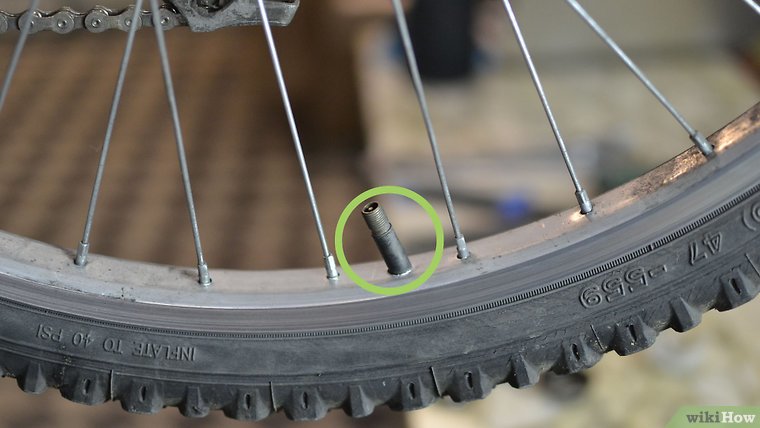 Once you've allowed the sealant time to dry, you can use some of your soapy water to make sure it has done its job and stopped the leak.
Once you've allowed the sealant time to dry, you can use some of your soapy water to make sure it has done its job and stopped the leak.
So how long can you drive with a tire that has been fixed with tire sealant? Although it depends on the product, some manufacturers say you can drive for up to 100 miles. However, most experienced experts will tell you that that estimate isn't realistic, and it certainly isn't advised. Again, tire sealant solutions are meant to be temporary, emergency measures rather than a permanent fix. For that reason, you should make a tire shop your next stop.
That having been said, these little cans can be just the thing you need in a pinch. They're small and inexpensive, so you can potentially keep several in your emergency kit.
A tire plug kit is another tool you can use to temporarily fix a flat until you can replace the tire with a new one. You'll find that there are all sorts of different kits that range from the most basic tools to a collection of implements for every possible scenario. However, the fundamental components you'll need to plug a flat tire are as follows: a rasp tool, a threading tool, the plug itself, and cement or sealant.
However, the fundamental components you'll need to plug a flat tire are as follows: a rasp tool, a threading tool, the plug itself, and cement or sealant.
Some of the larger, more extensive kits will come with pliers to remove foreign objects, a knife to trim the excess portion of the plug, and even work gloves to protect your hands while you make the repairs. While you can get by with the basic components, you'll probably want to have the other items at your disposal anyway. If you don't have them in your roadside emergency kit, it's a good idea to find a tire plug kit that comes with all of the above.
Step 1: First, you'll likely need to remove the tire. This may not be necessary in every case, but you need to be able to have direct access to the puncture point. If your tires are larger, or if the tires take up too much space within the wheel well, you may not have the clearance needed until the wheel is off. For more detailed instructions on how to remove your tire and wheel with a jack and a lug wrench, read our previous blog, "How to change a flat tire in four simple steps. "
"
Step 2: If the object that punctured your tire is still in place, use your pliers to remove it.
Step 3: Use the rasp tool to clean the puncture hole. The rasp tool is a long, pointed piece of metal with a rough, textured end. By quickly running it and out of the puncture, it helps make the hole more uniform, cleaning away stray pieces of rubber, but also providing a rough texture for the plug to grip on to.
Step 4: The insertion tool should look like a long, thin piece of metal with an eyelet at the end (like the head of a really large sewing needle). Thread the plug through the eyelet, and then firmly press the plug into the hole using the insertion tool. Some kits come with a glue, cement, or adhesive product, which you'll want to apply to the plug prior to insertion. Depending on your kit, there should be some portion (like 1/4 - 1/2 inch) of the plug protruding from the hole after insertion.
Step 5: Cut away the excess portion of the plug using your knife.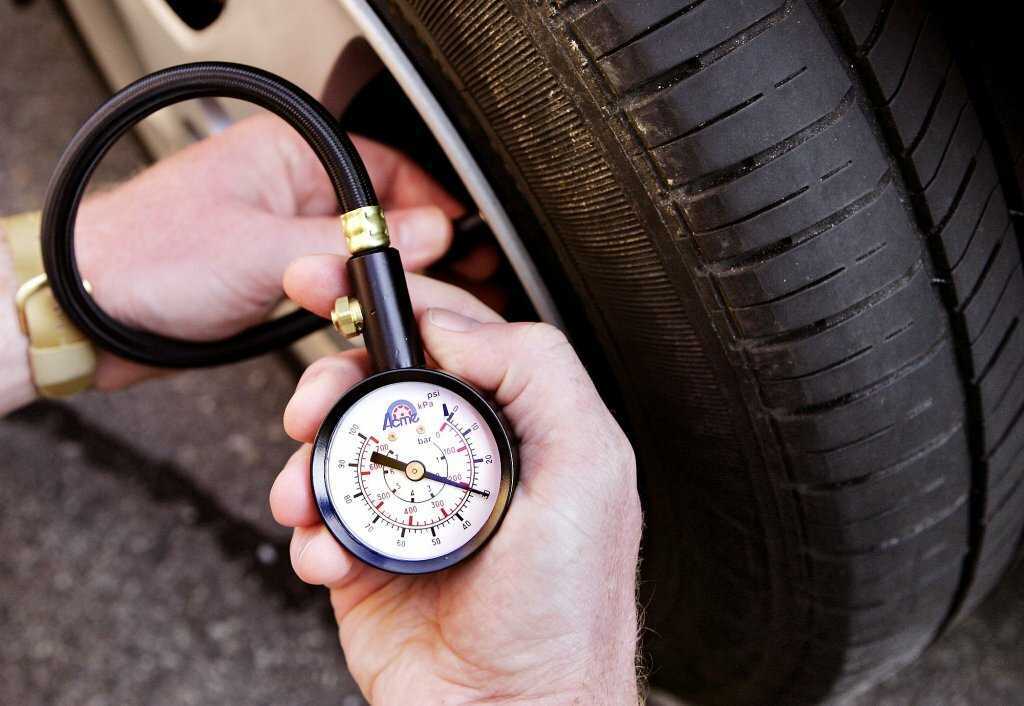 Then, apply a layer of adhesive over the top to seal it in place and cover any small cracks.
Then, apply a layer of adhesive over the top to seal it in place and cover any small cracks.
Step 6: Wait for the adhesive to dry, then apply some of your soapy water to the plug site to test for leaks and fill them in with adhesive if necessary.
Step 7: Before replacing the tire, inflate the wheel to ensure that the plug and seal holds. If it does, you can now place the tire back on the vehicle, fasten it in place with the lugnuts and finish inflating.
How long can you drive with a tire plug? Unlike tire sealant, plugs can potentially last for hundreds of miles, or even years after you apply it. Of course, this depends on the plug, the type and location of the puncture, and how well the plug was installed. Furthermore, depending on the cause of the puncture, your tire may be more prone to flats and blowouts in the future.
No matter what the cause of your flat is, or what method you choose to fix it, the safest option is to visit your local tire shop as soon as possible. It can be easy to forget about your tires when you're going through your list of auto maintenance tasks. However, taking care of your tires through routine tire maintenance is the best way to avoid flats in the future.
It can be easy to forget about your tires when you're going through your list of auto maintenance tasks. However, taking care of your tires through routine tire maintenance is the best way to avoid flats in the future.
Fixing a flat tire isn't always simple and sometimes, you need a helping hand. When you add Germania's Roadside Assistance Service to your personal auto policy, help is never far away!
Visit our website to learn more about Germania's Auto Insurance products!
Read more: Replacing a tire can be expensive, but your auto insurance doesn't have to be! Check out our blog to learn which auto insurance discounts you should look out for!
Author: Aleksey Kokorin
Experienced drivers are not surprised by such a trifle as a puncture, but for the first time beginners usually get confused in the sequence of actions, forget about important details and do not know what to do with a punctured wheel even in a tire shop - especially if they start offering choose from several options or intimidate with expensive repairs.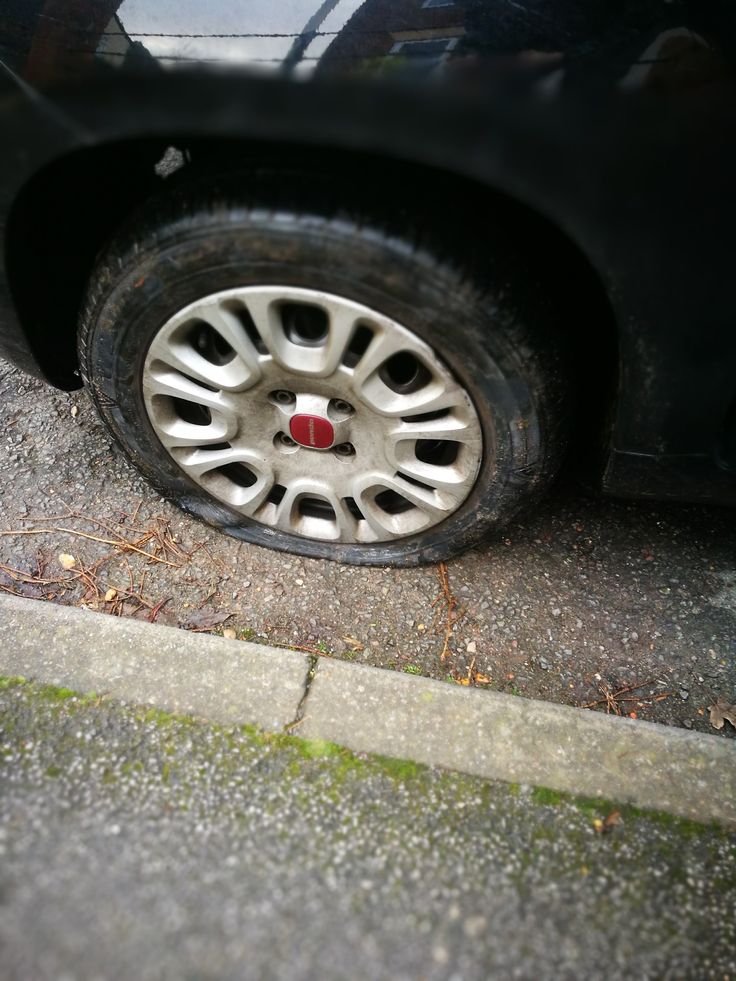 Let's set up an operation algorithm when a flat tire is detected and figure out what to do right away and what to choose later. nine0013
Let's set up an operation algorithm when a flat tire is detected and figure out what to do right away and what to choose later. nine0013
What to do when you find a puncture
Having found a flat tire, first of all you need to stop in a safe place, turn on the alarm, assess visibility and, if necessary, set an emergency stop sign: according to traffic rules, it is installed at least 15 meters from the car in the village and at least 30 meters outside the settlement. When choosing where to stop, consider the space to the side of the vehicle to handle a flat tire. You should not stop right on the road and in places where stopping and parking are prohibited: even if a punctured wheel belongs to the conditions of a forced stop, it is quite possible to drive several tens of meters on it to choose a safe and convenient parking place. At night or in conditions of limited visibility (for example, in fog or rain), it is imperative to wear a vest with retroreflective elements - this is required by clause 2. 3.4 of the SDA and common sense. nine0013
3.4 of the SDA and common sense. nine0013
Now you can start working on the wheel. We will sequentially consider several options for action, and then move on to ways to repair a damaged tire.
The most obvious solution to a flat tire is to replace it. If you have a spare tire that you are sure is in good condition, the best option is to install it and visit a tire shop to repair a punctured tire - such repairs will be more reliable and of high quality than doing it yourself.
If you don't have a suitable spare tire, but you do have a pump or compressor, you can assess the damage to the tire and try to pump it up again to get to the tire shop. It is better to start searching for an air leak with a valve (aka “nipple” or “nipple”): often a faulty spool becomes the cause of a flat tire. It is easy to check it: unscrew the protective cap (if there is one), pour water on it (or slobber it, as in childhood): air bubbles will leak. In this case, you can try to replace the spool valve by unscrewing it and screwing in a new one, but if there is no new valve, as well as a store nearby, you can try just unscrewing and screwing it back in.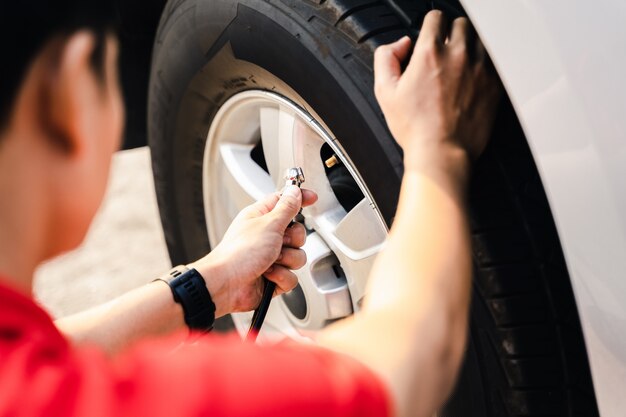 Regardless of whether it helped or not, you need to visit a tire shop to replace the entire spool or valve. nine0013
Regardless of whether it helped or not, you need to visit a tire shop to replace the entire spool or valve. nine0013
If the valve is tight and the tire is flat, it is most likely a puncture. The easiest way to find a puncture that is free of foreign objects is to pour water on the tire while looking at the surface: the damage will reveal itself as air bubbles. However, often the cause of the puncture can be found along with it: a self-tapping screw, nail or other arbitrary object sticking out of the wheel will clearly indicate the place of depressurization. In this case, you do not need to immediately remove the foreign object from the tire: it partially seals the hole, and if the pressure loss is slow, you can try to pump up the wheel and drive to the tire shop. nine0013
The same goes for wheels that are leaking from the rim or from a faulty valve. Usually, in this case, the air is bled slowly, and you can pump up the wheel and have time to get to the place of repair.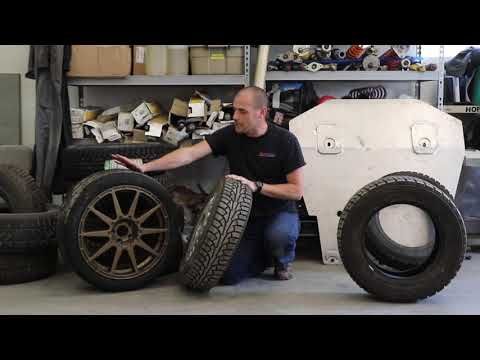 By the way, rim leakage can occur due to disk deformation upon impact - for example, when hitting a pit with sharp edges. Such situations are fraught with damage to both the disk and the sidewall of the tire, in which case the disk will need to be corrected, and the tire repaired or even replaced. To avoid rim leaks, you need to inspect the rims every time you change tires. The loss of tightness occurs either due to corrosion or due to disc deformation, and not only steel, but also light alloy wheels can corrode. So if you see paint blistering or rust on the rim, the tires need to be put on rim sealant: when changing tires, this will be cheaper than the subsequent removal and re-tire to fix a leak on the rim. nine0013
By the way, rim leakage can occur due to disk deformation upon impact - for example, when hitting a pit with sharp edges. Such situations are fraught with damage to both the disk and the sidewall of the tire, in which case the disk will need to be corrected, and the tire repaired or even replaced. To avoid rim leaks, you need to inspect the rims every time you change tires. The loss of tightness occurs either due to corrosion or due to disc deformation, and not only steel, but also light alloy wheels can corrode. So if you see paint blistering or rust on the rim, the tires need to be put on rim sealant: when changing tires, this will be cheaper than the subsequent removal and re-tire to fix a leak on the rim. nine0013
If you find a puncture, but there are no foreign objects in it, and you do not have a spare wheel and tire repair kits, there is another popular method of temporary "repair". You can screw a self-tapping screw into the found hole - if, of course, you have one. In extreme cases, you can look for a self-tapping screw in the cabin by unscrewing it from some interior detail.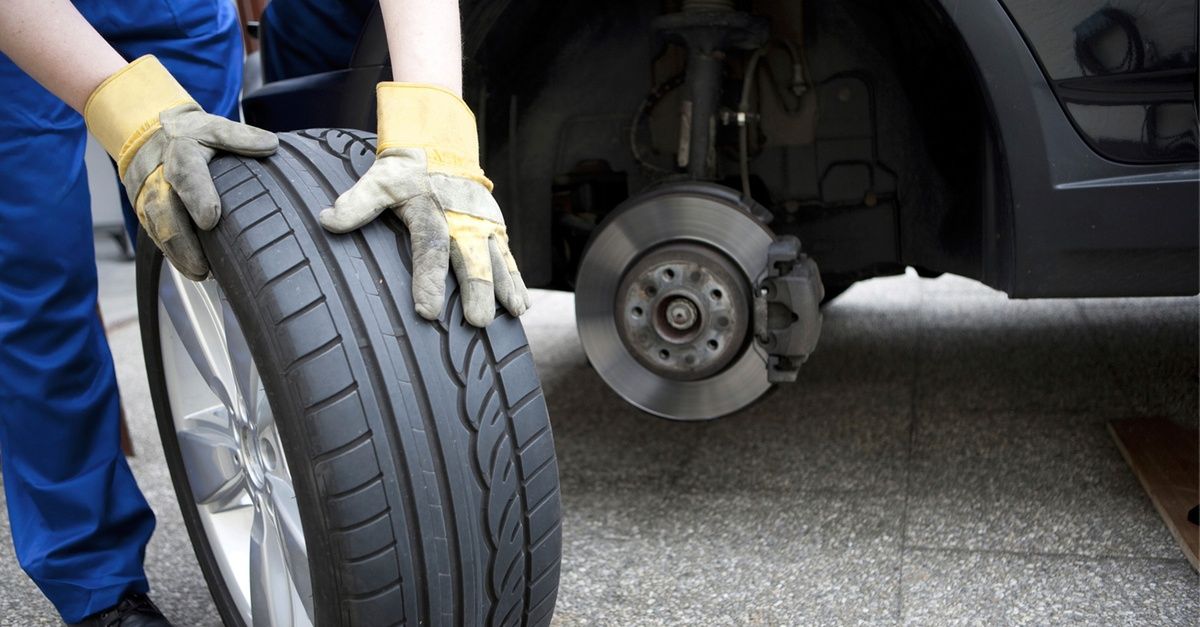 This method cannot be called reliable: it is unlikely to ensure complete tightness of the wheel, but at least it can help you get to the nearest tire shop. nine0013
This method cannot be called reliable: it is unlikely to ensure complete tightness of the wheel, but at least it can help you get to the nearest tire shop. nine0013
And a couple more useful remarks. If the wheel is completely flat, then it is easier to inflate it without a spool: the latter must be unscrewed, then the tire must be inflated and quickly screwed back in. The fact is that the spool itself, when inflated, resists the compressor, and in the event of a loose fit of a flat tire to the disk, the power of a simple magazine compressor may not be enough, and the absence of a spool helps to increase air flow and facilitate the operation of the compressor. If this does not help, you can jack up the car by hanging a flat tire: this will improve the fit of the tire to the disk, and the chances of inflating the tire will increase. nine0013
On-Site Repair Methods
Now let's look at options for repairing a tire yourself using special materials that you should carry with you or, if a puncture caught you in the city, buy it at the nearest auto shop.
1. The most common, cheapest and easiest way to do it yourself is to install a raw rubber band. The harnesses are sold complete with an abrasive awl to expand the hole in the tire and improve the contact of the repair harness with its edges, as well as a needle for installing the harness and an adhesive to fix it and at the same time seal the puncture. When choosing a repair kit in a store, you should pay attention to the following nuances:
Install the harness in the following order. First, the found hole is expanded with an abrasive awl - you need to insert and remove it several times into the puncture site. Then the tourniquet is inserted into the eye of the needle, and glue is applied to it.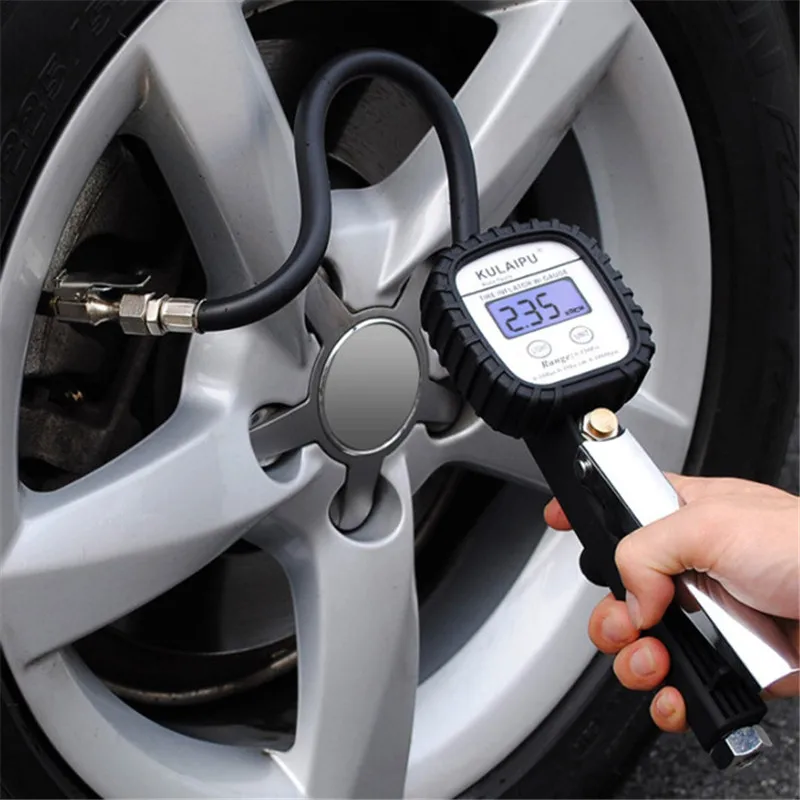 After that, the needle with the tourniquet must be inserted into the hole in the tire and pulled out sharply - so that the tourniquet remains in the hole, and the needle comes out without it. If everything worked out, it remains only to cut the end of the harness flush with the surface of the tire and pump up the wheel. nine0013
After that, the needle with the tourniquet must be inserted into the hole in the tire and pulled out sharply - so that the tourniquet remains in the hole, and the needle comes out without it. If everything worked out, it remains only to cut the end of the harness flush with the surface of the tire and pump up the wheel. nine0013
The advantages of repairing with a harness are quite decent reliability, simplicity and low cost. On a well-repaired tire, you can drive for a long time, and if the repair site starts to poison, you can either replace the harness or have the tire repaired in a quality service. Among the minuses is the possibility of damaging the cord during installation, as well as lower reliability compared to “full-fledged” repair methods in a tire shop. Strictly speaking, a tourniquet is still a temporary repair, so if it is possible to pump up a wheel and get to a tire fitting, then it is better not to enlarge the hole in the tire and get to the experts. nine0013
2.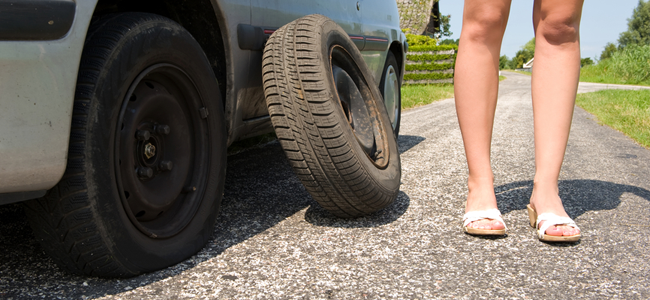 The second repair option is aerosol liquid sealants sold in cans. To repair a punctured tire with sealant, you need to remove the foreign object from the puncture site, then pour the sealant into the wheel through the valve, twist it to distribute the composition inside the tire, pump up the wheel and drive several kilometers at low speed for the final uniform distribution of the sealant.
The second repair option is aerosol liquid sealants sold in cans. To repair a punctured tire with sealant, you need to remove the foreign object from the puncture site, then pour the sealant into the wheel through the valve, twist it to distribute the composition inside the tire, pump up the wheel and drive several kilometers at low speed for the final uniform distribution of the sealant.
Among the advantages of this repair is the simplicity and less labor intensity compared to installing a harness. However, there are also disadvantages: the larger the hole, the higher the chance that the sealant will not be able to eliminate it, and such a repair can affect the wheel balance. Compared to a tourniquet, it can be considered even less reliable and preferable, but simpler. nine0013
Repair options at a tire shop
If you put on a spare tire and brought the wheel to a tire shop, you may also be offered several repair options. Consider the most popular with an indication of the advantages and disadvantages.
1. The first repair method is the same harness installation as described above. As we remember, the tourniquet refers to a temporary repair, so among tire specialists this method is considered bad form, but many workshops do not exclude it from the list of services. All the advantages and disadvantages are the same here: such a repair will be the fastest, simplest and cheapest, but less reliable than other methods. It is worth choosing it in cases where the price and / or speed of the procedure is more important to you than anything else. If quality is a priority, then it is better to fork out for the options listed below. nine0013
2. The second option for repairing a puncture is to install a patch on the inside of the tire, the so-called cold vulcanization. In this case, the tire is removed from the disk, the surface around the puncture is treated with an abrasive, and the damage is sealed with a special patch. This is a more preferred repair method than a tourniquet: it is more reliable and durable, especially in the case of side punctures, when not the thick tread part of the tire is damaged, but the thinner sidewall. Among the minuses, only a higher cost can be noted: in addition to the actual tire repair, you will have to pay for the removal and installation of the wheel (or do it yourself), tire fitting and balancing. nine0013
Among the minuses, only a higher cost can be noted: in addition to the actual tire repair, you will have to pay for the removal and installation of the wheel (or do it yourself), tire fitting and balancing. nine0013
3. The third option is a "complex" of the first and second: installation of the so-called repair "fungus". The “hat” of the fungus is a patch, and the “leg” is threaded from the inside of the tire to the outside. After gluing the patch, the excess part of the leg is cut off, as in the case of the tourniquet. Thus, not only the inner surface of the tire is closed, but also the hole itself. The advantages and disadvantages of this repair method are generally the same as those of a patch.
4. An extreme, “emergency” measure when repairing a punctured wheel is to install a camera in it. Typically, this method is used for tires that are no longer worth repairing, or “for reliability” after repairing a complex puncture. It should be understood that almost all modern tires are tubeless, that is, they are not designed to install a camera, so it’s not worth driving a wheel repaired in this way for a long time. Installing a tube is a temporary solution for riding until a new tire is purchased, and sometimes such wheels are left as spares. So this repair method can be kept in mind as a backup. nine0011
Installing a tube is a temporary solution for riding until a new tire is purchased, and sometimes such wheels are left as spares. So this repair method can be kept in mind as a backup. nine0011
Finally
We have deliberately left out of this text such methods as combined repair of tires with a tourniquet and a patch and hot vulcanization. The first is used quite rarely and for specific damage, and it is enough just to know about its existence. Well, the second is used to repair serious side cuts, and it is not only rare, but also very expensive. The cut site in this case is prepared, filled with raw rubber and processed with a hot press for vulcanization. Equipment for this procedure is not available in every tire shop, and the cost of repair can be about half the cost of a new tire. nine0013
interesting popular questions
Articles / Practice It's all about centimeters: how to drive through a snowy winter yard Why in the yard, you ask? Because most often inexperienced drivers get stuck in the yard in winter, and not on a cleared road. And it is also easier for them to damage their car in the yard. P... nine06 eleven 1 01/09/2023
And it is also easier for them to damage their car in the yard. P... nine06 eleven 1 01/09/2023
Articles / Interesting Faster than they look: 15 best sleepers of 2023 We talked in detail about what sleepers are - these are outwardly inconspicuous cars that can actually give odds to many in traffic light races. And the recently introduced fifth po... 2757 1 1 01/03/2023 nine0011
Articles / Practice Eternal youth: how to prevent the car body from aging Those who have bought a new car at least once in their lives experienced a feeling that can be described by the common phrase "if only nothing happened to the swallow.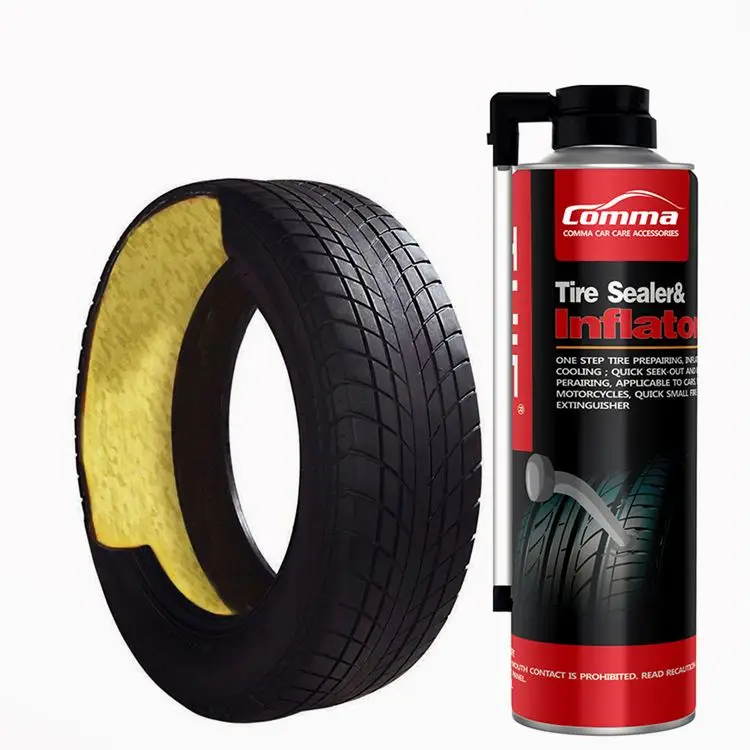 " But life is so badly arranged that with la ... 3844 1 four 27.12.2022 nine0011
" But life is so badly arranged that with la ... 3844 1 four 27.12.2022 nine0011
Test drives / Test drive Haval Dargo vs Mitsubishi Outlander: the dog is barking, the stranger is coming In the Haval dealership in the south of Moscow, life is in full swing: buyers look at cars, communicate with managers and sign some papers. While I was waiting for the test Dargo, the same cross... 21262 7 205 13.09.2022
Test drives / Test drive Motor from Mercedes, emblem from Renault, assembly from Dacia: test drive of the European Logan 1. 0 It would seem that what's new can be told about the second generation Renault Logan, known to every Russian taxi driver, as they say, up and down? However, this car has... 16936 10 41 08/13/2022 nine0011
0 It would seem that what's new can be told about the second generation Renault Logan, known to every Russian taxi driver, as they say, up and down? However, this car has... 16936 10 41 08/13/2022 nine0011
Test drives / Test drive Geely Coolray vs Haval Jolion: Free Cheese? If! Do you want to buy a car today with a full warranty, on credit at an adequate rate, without wild dealer markups? Now this is still a task, because a full-fledged chain of "representation - s... 14492 26 thirty 08/10/2022 nine0011
a minute ago, calmly sitting in a cozy lounge, he faces a problem: what to do with it?
Let's start with the fact that a tire puncture on a modern car still needs to be noticed. Therefore, the driver needs to monitor the force on the steering wheel, the noise from the wheels and the tire pressure indicators on the instrument panel (if any). If a punctured wheel is not noticed in time, the tire will be completely chewed up and the issue of its repair will be removed: only a replacement. nine0011
But we will proceed from the fact that the puncture was noticed in time. If there are signs of a flat tire - the car is pulling to the side, a rumble or rhythmic noise from the side of the wheel, wagging the stern - you need to gradually reduce the speed and slowly pull over to the side of the road in a safe place. Dealing with a flat tire right on the roadway is dangerous, you should not do this.
Dealing with a flat tire right on the roadway is dangerous, you should not do this.
Not in all cases the driver can solve the problem of a flat tire on his own. But you need to try to find a puncture or air leak in order to immediately decide on a strategy for solving the problem. nine0011
 Unlikely, air may be escaping through a defective nipple (spool). The old but sure way to check with saliva at the valve hole is known to all drivers: make sure that the air does not try to blow out moisture with a bubble. If he still tries, the spool failed. If you don't have a spare, try to stop the air from escaping through the damaged nipple by prying the cap with a thin tool, as if trying to pull it out. The measure is temporary, but often effective. nine0004
Unlikely, air may be escaping through a defective nipple (spool). The old but sure way to check with saliva at the valve hole is known to all drivers: make sure that the air does not try to blow out moisture with a bubble. If he still tries, the spool failed. If you don't have a spare, try to stop the air from escaping through the damaged nipple by prying the cap with a thin tool, as if trying to pull it out. The measure is temporary, but often effective. nine0004
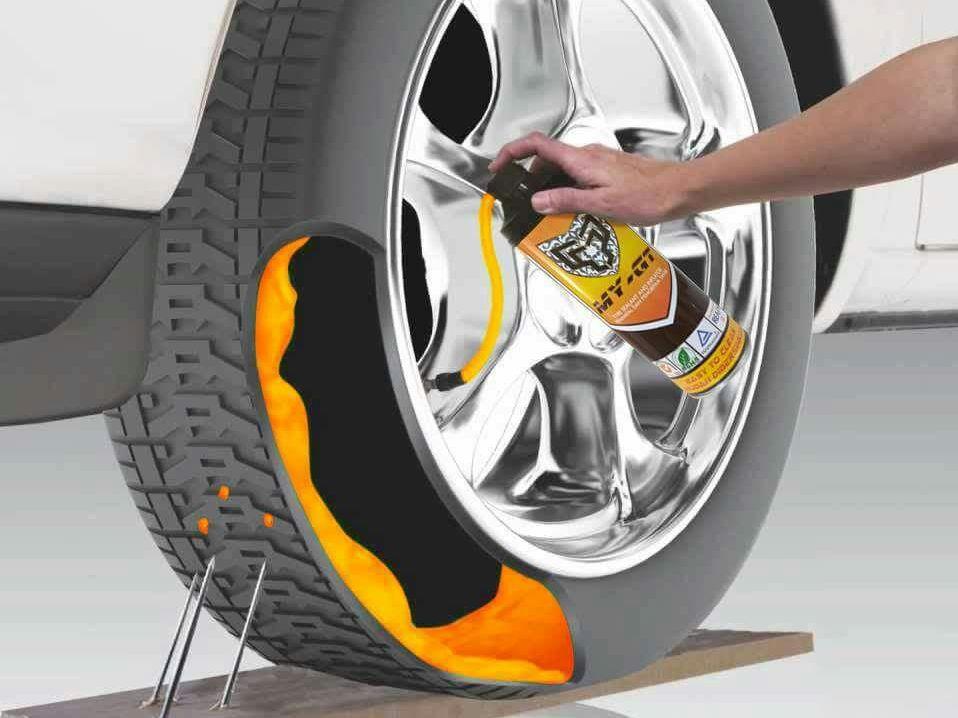 Do not rush to immediately extract it into the light of God. nine0004
Do not rush to immediately extract it into the light of God. nine0004
First of all, do not immediately remove the flat tire to repair it or change it to a spare tire. Try to determine the intensity of the air leak. It may be easier to pump up a flat tire with a compressor or pump and drive to the nearest tire shop, where professionals will take care of it. In some cases, for example, if two wheels are damaged with one available spare tire, only periodically pumping up a better preserved tire and you can get to the service station.